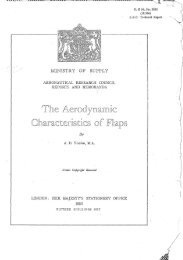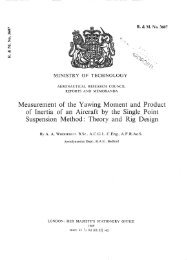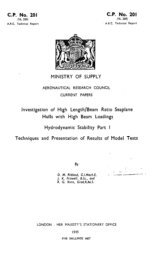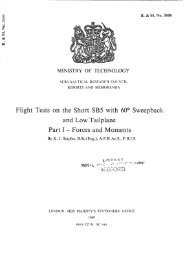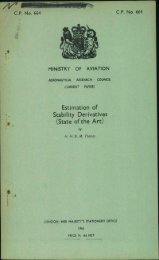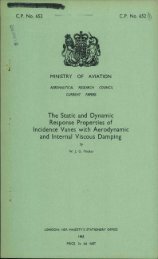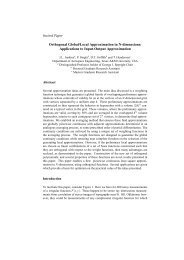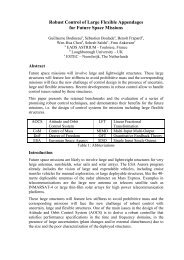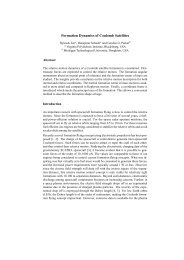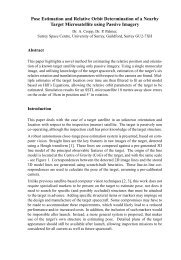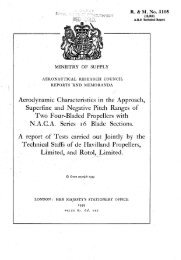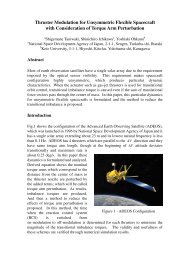A Survey of Unsteady Hypersonic Flow Problems
A Survey of Unsteady Hypersonic Flow Problems
A Survey of Unsteady Hypersonic Flow Problems
Create successful ePaper yourself
Turn your PDF publications into a flip-book with our unique Google optimized e-Paper software.
- I+0 -<br />
vehicle. (The difference between the damping curves for the phugoid motion for<br />
the vehicle with air-breathing engine, and for the vehicle with rocket engine,<br />
is a result <strong>of</strong> the assumed variation <strong>of</strong> thrust with altitude for the sirbreathing<br />
vehicle.)<br />
The values <strong>of</strong> frequency parameter given by Etkln's analyst can be used<br />
to estimate the order <strong>of</strong> magnitude <strong>of</strong> the maximum frequericy parameters that are<br />
likely to be met in practice, except for vehicles with very low wing loadings.<br />
This result arises from the fact that It can be shown, by a dimensional argument,<br />
that the frequency parameter <strong>of</strong> the pitching osclllatlons <strong>of</strong> a vehicle is<br />
independent <strong>of</strong> vehicle size and speed, and 1s dependent only on the aerodynamic<br />
characteristics, the altitude, the weight loading, and the inertia properties.<br />
The hypothetical vehicle 1s sufficiently representstlve in these respects.<br />
In general terms, the frequency <strong>of</strong> the pitching oscillations <strong>of</strong> a<br />
vehicle is given by:<br />
where M,<br />
<strong>of</strong> inertia.<br />
where<br />
!Y<br />
. . . (3.8)<br />
1s the aerodynamic stiffness in pitch and IB is the vehxle moment<br />
Then, if the aerodynamic coefficients are independent <strong>of</strong> speed,<br />
pU2Sb<br />
fa -<br />
I---<br />
5<br />
is the radius <strong>of</strong> gyration <strong>of</strong> the vehicle, and the frequency parameter<br />
2db PSb<br />
k=-oc -.<br />
U rmK=<br />
Y<br />
. . . i3.9)<br />
From equation (3.9) it can be concluded that the frequency parameter is<br />
independent <strong>of</strong> the velocity <strong>of</strong> the vehicle, and depends only on the vehicle<br />
characteristics and the altitude. It decreases with altitude.<br />
For geometrically and inertially similar bodies, since<br />
and<br />
5<br />
it follows from equation (3.9) that<br />
S cc b2,<br />
m oc aba where cr is the vehicle density,<br />
~1 b,<br />
k cc ,'Tc. . . . (3.10)<br />
From equation (3.10),it can be concluded that the frequency parameter<br />
is independent <strong>of</strong> the vehicle size, and inversely proportional to the square root<br />
<strong>of</strong>/



